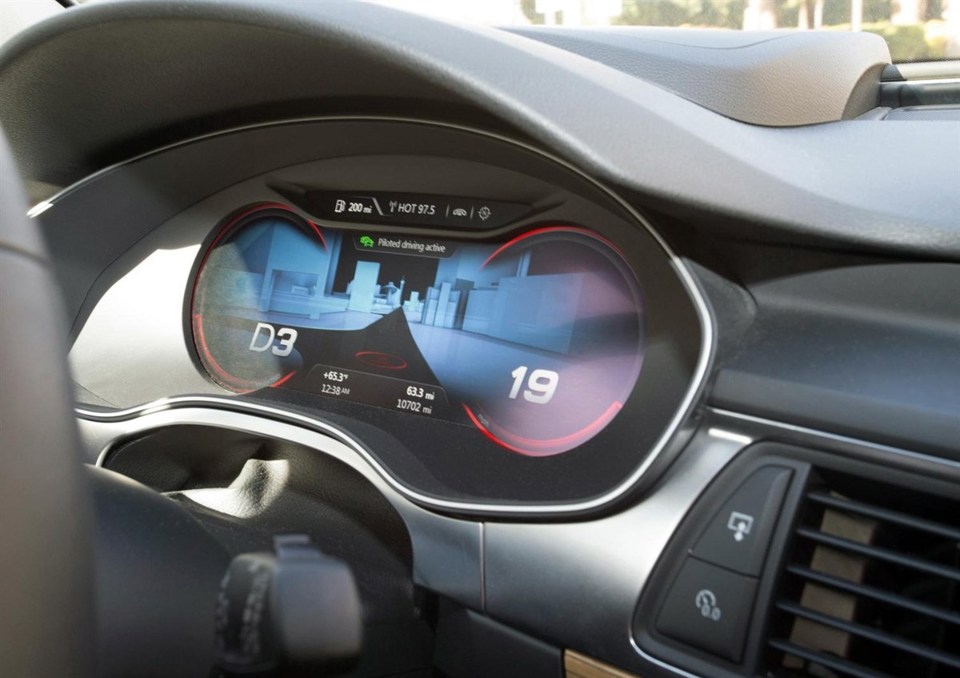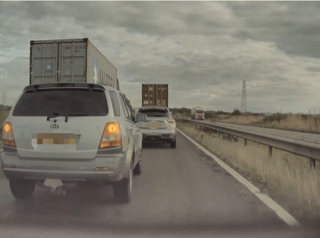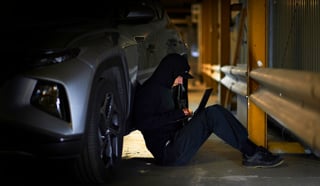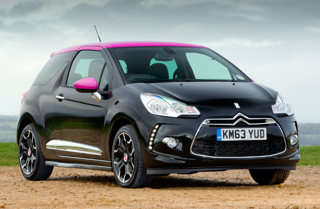Audi has developed two fully operational demonstrators that show how future models could offer ‘hands (and feet)-free’ driving in moving traffic and completely ‘driver-free’ parking.
The first of the two working prototypes, which have been in service at this month’s Consumer Electronics Show in Las Vegas, shows how piloted driving in traffic jams will in future reduce the driver’s workload in stressful situations, such as in congested traffic. At speeds of between zero and 37mph, the system helps to steer the car within certain constraints, and also accelerates and brakes autonomously.
The car’s speed and the speeds of nearby vehicles are constantly analysed by the piloted system. If it detects a traffic jam from the data at speeds below 37mph, the driver can activate the assistance function. By broadly scanning its surroundings, the system can also work in a temporary lane even in the absence of lane markings. It also reacts cooperatively to cars moving into or out of the lane.
A system fitted to the second technology demonstrator operating at CES enables the driver to get out of the car in front of the garage or before negotiating a tight parking spot, and to instruct it to autonomously park itself via the remote key fob or a smartphone.
With the help of its sensors, the car drives autonomously into the parking space or the garage under the driver’s supervision, stopping immediately if it detects an obstacle. Once it has reached its final position, it shuts off the engine, deactivates the ignition and locks the doors before finally sending a confirmation to the driver.
Getting out of the garage or parking space is just as convenient. At the touch of a button the vehicle manoeuvres out of the space, and the driver and passengers can easily get in and drive off.
Another parking talent simulated by the demonstrator at CES that could be viable in the longer term involves the car ‘talking’ to the public car park it is entering, enabling it to find the nearest parking space and to guide itself autonomously to that space and then park.
The driver activates the futuristic technology with the aid of a smartphone app, which enables a connection to be established with the car park’s central computer. The central computer takes over part of the control function and guides the vehicle via a Wireless Local Area Network (WLAN) connection to the nearest available parking space. The vehicle’s movements are recorded via external laser sensors and processed with additional movement data by the car park’s computer to pinpoint the vehicle. The central computer also has a map of the car park layout and records parking space occupancy. This information is transmitted to the vehicle and used to plan the route, thus ensuring that the vehicle can actually drive from the starting point to its destination. The vehicle also monitors its surroundings using twelve ultrasound sensors as it moves. In future, four video cameras will also be used.
Audi is currently in the process of equipping a car park in its base town of Ingolstadt, Germany, with the relevant technology.






















GrumpyOldMen - 22/01/2013 16:33
I want one of those. Shame about the person you've parked next to who leaves one of those "...leave a ******* can opener" messages under the wiper.